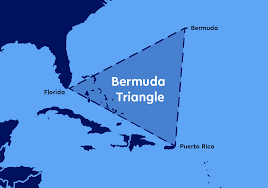In the vast and ever-evolving maritime world, container ships are the lifeline of global trade. They connect continents, power economies, and make the modern consumer market possible. Among these giants of the sea, one vessel stands out not just for its sheer size, but also for its cutting-edge design and capability – the MSC Irina. As one of the world’s largest container ships, MSC Irina represents the peak of maritime engineering and symbolizes the future of ocean freight transportation.
Introduction to MSC Irina
MSC Irina is part of the impressive fleet operated by the Mediterranean Shipping Company (MSC), the world’s largest container shipping line by capacity. Commissioned in 2023, MSC Irina immediately captured global attention due to its unprecedented size and capacity.
Built by Yangzijiang Shipbuilding Group, one of China’s top shipbuilders, MSC Irina is the first of a series of six ultra-large container vessels (ULCVs) ordered by MSC to further strengthen its position in the global logistics market.
Key Specifications of MSC Irina
MSC Irina is a technological marvel and is recognized for holding the title of one of the largest container ships in the world. Let’s take a look at its specifications:
-
Length: 399.9 meters (1,312 feet)
-
Beam (width): 61.3 meters
-
Container Capacity: Approximately 24,346 TEU (Twenty-foot Equivalent Units)
-
Deadweight Tonnage (DWT): Around 241,000 metric tons
-
Gross Tonnage: Over 235,000 GT
-
Shipbuilder: Yangzijiang Shipbuilding Group, China
-
Year Delivered: 2023
To put its size in perspective, the MSC Irina is nearly as long as four football fields lined up end-to-end. With such dimensions, it can carry an enormous amount of cargo, effectively reducing the number of trips needed for transporting goods.
Design and Engineering Excellence
The design of MSC Irina reflects the latest advancements in marine technology. The vessel boasts a dual-fuel ready engine, meaning it can potentially operate on both conventional marine fuels and cleaner alternatives like LNG (liquefied natural gas). This capability aligns with global efforts to reduce greenhouse gas emissions from the shipping industry.
Additionally, MSC Irina features:
-
Advanced hull design for optimized fuel consumption
-
Energy-efficient propulsion systems
-
Modern ballast water treatment systems, ensuring environmental compliance
-
Smart navigation technology for improved safety and efficiency
-
Selective Catalytic Reduction (SCR) system, reducing NOx emissions
MSC Irina is not just massive; it is also engineered to be environmentally responsible, echoing MSC’s commitment to achieving net-zero emissions by 2050.
Impact on Global Trade
The role of ultra-large container vessels like MSC Irina in global trade cannot be overstated. By transporting over 24,000 TEUs in a single voyage, MSC Irina helps:
-
Lower shipping costs per container
-
Reduce carbon emissions per unit of cargo
-
Increase efficiency of supply chains
Ports around the world are now upgrading infrastructure to accommodate such mega-vessels. From deeper berths to larger cranes and expanded storage yards, the arrival of ships like MSC Irina is transforming port operations globally.
Routes and Operations
As of 2024-2025, MSC Irina is primarily deployed on the Asia–Europe route, one of the busiest maritime trade corridors in the world. It connects major ports like:
-
Shanghai, China
-
Singapore
-
Port Klang, Malaysia
-
Rotterdam, Netherlands
-
Antwerp, Belgium
-
Felixstowe, UK
These routes are strategically important, handling goods ranging from electronics and textiles to machinery and food products.
Economic Significance
MSC Irina is more than a ship – it is an economic enabler. By facilitating the movement of goods in such large volumes, it contributes to:
-
Job creation in logistics, warehousing, and port operations
-
Supply chain resilience, especially in post-pandemic recovery
-
Affordable goods for consumers, thanks to economies of scale in transport
Furthermore, MSC Irina showcases China’s growing prowess in shipbuilding and maritime innovation, signaling shifts in the global industrial landscape.
Challenges and Considerations
While MSC Irina is a feat of engineering, operating such large ships is not without challenges:
-
Port Compatibility: Not all ports can handle such large vessels, which limits their routing options.
-
Navigational Complexity: Maneuvering a 400-meter-long ship through narrow channels or busy harbors demands extreme skill and advanced technology.
-
Environmental Concerns: Despite being more efficient per container, the ship still consumes large amounts of fuel overall. Future retrofitting for greener fuels will be necessary.
-
Congestion Risk: A delay or blockage involving a vessel of this size, such as the Ever Given incident in the Suez Canal, can severely impact global supply chains.
Nonetheless, shipping giants like MSC are investing in infrastructure, training, and R&D to address these issues.
MSC and Its Vision
The Mediterranean Shipping Company, based in Geneva, Switzerland, is spearheading the transition to a more sustainable and interconnected world. With over 800 vessels in its fleet, MSC is committed to:
-
Reducing maritime emissions
-
Digitizing shipping logistics
-
Improving global connectivity
-
Maintaining high safety and operational standards
MSC Irina is a reflection of this broader strategy – combining scale, efficiency, and environmental responsibility.
Conclusion
In a world increasingly reliant on efficient and sustainable transport solutions, MSC Irina stands as a symbol of progress. It is not just a ship – it is a beacon of innovation, a driver of global commerce, and a step forward in the evolution of maritime trade.
As trade volumes grow and environmental concerns rise, ships like MSC Irina will play a pivotal role in shaping the future of shipping. With its immense capacity, smart systems, and ecological foresight, MSC Irina is truly a marvel of the modern maritime age – sailing not just across oceans, but also toward a smarter, greener tomorrow.
